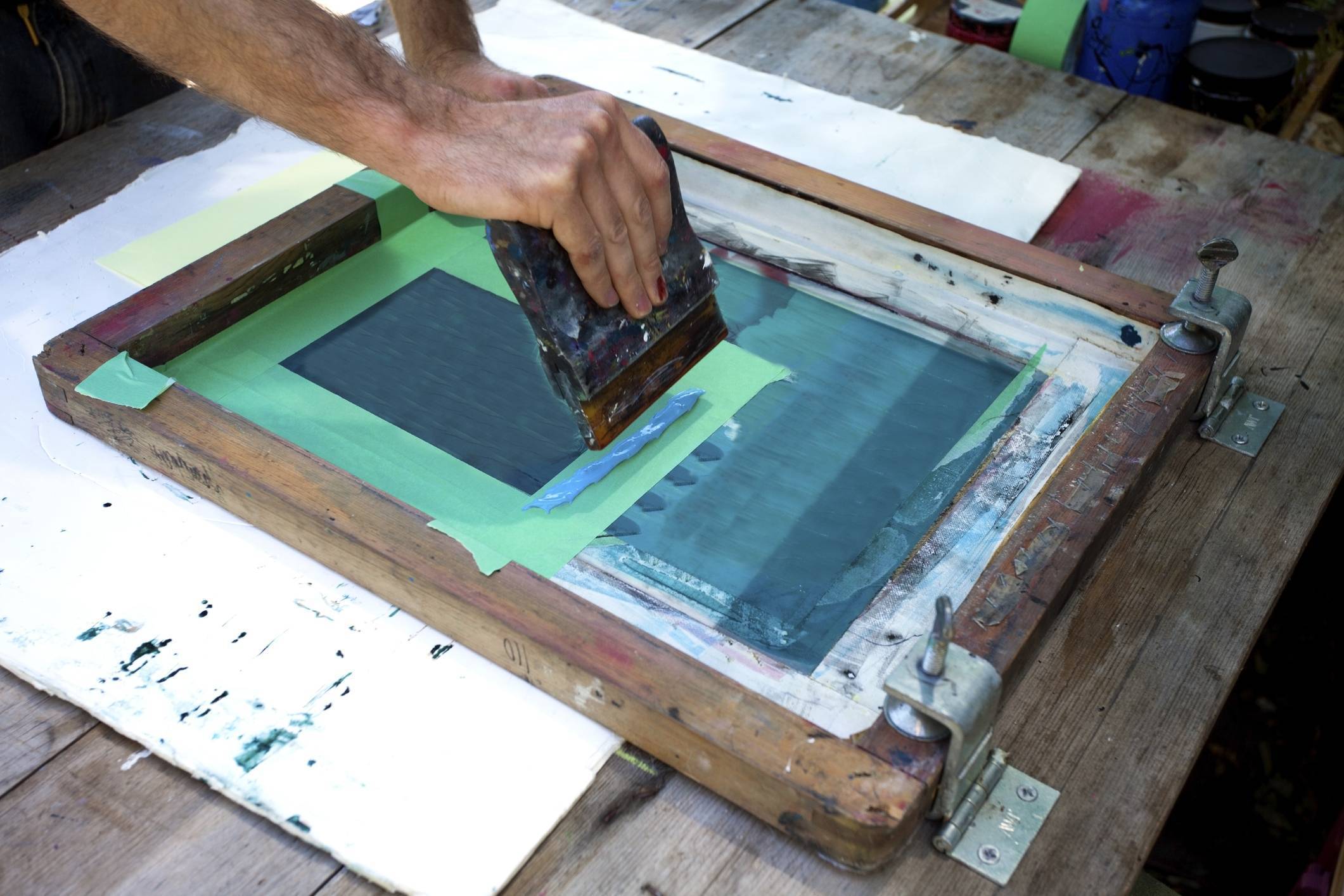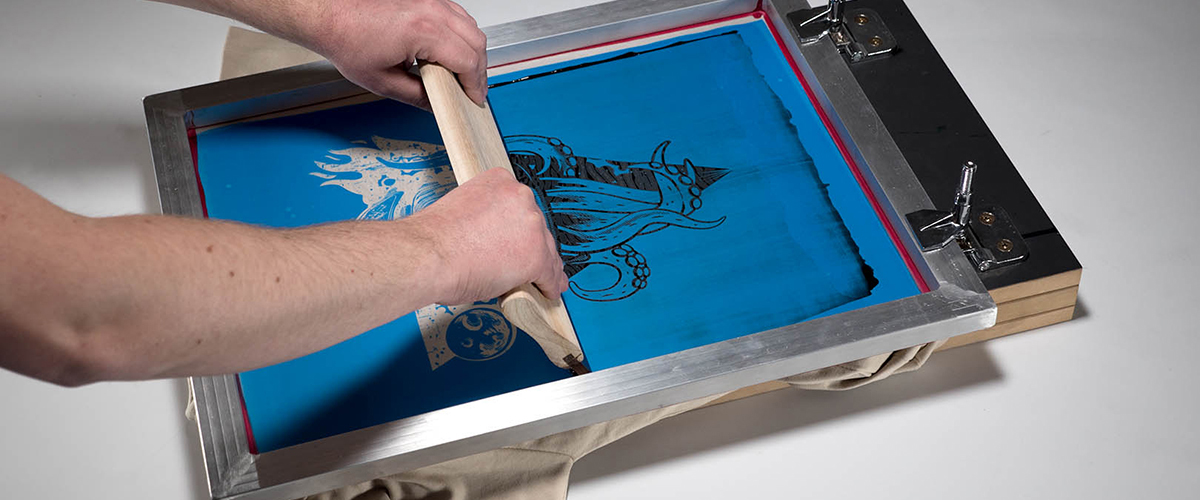ChatGPT said: 10:9 Design Company vs competitors: why they stand out in Texas
The Important Guide to Recognizing Screen Printing and Its Versatile Makes use of
Screen printing has a rich history that goes back to old times, evolving into a sophisticated strategy utilized throughout different industries today. This overview explores the ins and outs of the screen printing process, describing its applications in fashion, home, and advertising and marketing design - 10:9 Design contact. Comprehending these principles can open up innovative possibility for both commercial and creative jobs. The adhering to areas will expose crucial tips and methods to boost one's screen printing endeavors
The History of Screen Printing
Although screen printing has origins that map back centuries, its evolution reflects the imaginative and technical advancements of different societies. Coming from old China, the strategy was initially used for decorating textiles and later spread to Japan, where it became essential to Ukiyo-e woodblock printing. The technique moved to Europe in the 18th century, where it got popularity among artisans and industrial printers. The creation of picture emulsion in the 20th century changed screen printing, permitting more detailed designs and greater performance. Musicians like Andy Warhol further moved its popularity, using the medium to create iconic jobs that combined commercialism and art. By the late 20th century, screen printing had established itself as a versatile strategy, used in style, advertising and marketing, and fine art. Today, it continues to evolve, integrating digital innovation and expanding its applications throughout various industries.
The Screen Printing Process Explained
Screen printing transforms imaginative visions right into concrete designs via a collection of accurate actions. A picture is developed and after that transferred onto a screen, commonly made of fine mesh fabric extended over a frame. A light-sensitive solution is applied to the screen, which is revealed to light, solidifying in locations not covered by the picture. After rinsing the unhardened emulsion, a pattern is developed.
Next off, the screen is placed over the substratum, whether it be fabric, paper, or an additional material. Ink is after that pushed with the open locations of the stencil making use of a squeegee, depositing the layout onto the substrate listed below. This procedure can be repeated for numerous shades, requiring different displays for every tone. Finally, the published item is treated making use of heat to assure the ink sticks correctly, causing a resilient, vivid design prepared for usage.
Types of Screen Printing Techniques

Furthermore, specialty methods, such as discharge screen printing, remove color from the material to create softer prints, while aluminum foil screen printing uses metal aluminum foil to attain a shiny coating (10:9 Design reviews). Each method uses distinctive characteristics, catering to different creative demands and production ranges, ultimately broadening the opportunities within the screen printing domain
Applications of Screen Printing in Different Industries

Furthermore, the signs and advertising fields utilize screen printing for producing eye-catching display screens and banners. This approach allows for strong shades and intricate styles that catch focus. In electronics, screen printing is employed for applying conductive inks to motherboard, essential for part links. Furthermore, the home style industry embraces screen printing to create unique layouts on fabrics and wall art. In general, screen printing acts as a critical tool across varied fields, boosting products with personalized and visually enticing graphics.
Tips for Effective Screen Printing Projects
While undertaking a screen printing job, mindful focus to information can substantially boost the last end result. Picking high-grade materials is important; this consists of the screen, inks, and substrates. Making use of appropriate mesh matters can impact ink deposition and information resolution. Preparation is just web link as crucial; thorough cleansing of displays and appropriate direct exposure times guarantee crisp prints.
Next off, accurate enrollment is critical for multi-color prints. Using positioning devices can help attain specific layering. Additionally, testing prints on scrap materials prior to manufacturing helps recognize possible problems without wasting sources.

Regularly Asked Inquiries
What Materials Are Best for Screen Printing on Fabric?
Cotton and polyester blends are ideal for screen printing on fabric due to their resilience and ink absorption. Additionally, specialty fabrics like silk or canvas can generate one-of-a-kind click this site appearances and coatings, improving the overall style quality.
How Do I Tidy and Maintain Screen Printing Tools?
To cleanse and preserve screen printing tools, one must consistently clean screens with appropriate solvents, evaluate mops for wear, lube moving components, and shop all things in a dry, dust-free environment to prolong their life-span.
What Are the Environmental Impacts of Screen Printing?
Screen printing can have substantial ecological impacts, including chemical waste from inks and solvents, water use throughout cleaning procedures, and energy usage. Eco-friendly products and lasting methods are vital for decreasing these adverse impacts.
Can Screen Printing Be Done in the house Efficiently?
Screen printing can be efficiently done at home with the best products and strategies. Hobbyists can develop high quality prints, though success relies on their skill degree, equipment, and understanding of the procedure included.
What Are the Expenses Associated With Starting a Display Printing Business?

Starting a screen printing organization entails prices for equipment, materials, and workspace. First expenditures generally vary from a few hundred to several thousand dollars, depending on the scale, quality of machinery, and desired production capability.
Screen printing has an abundant background that dates back to old times, advancing right into an innovative strategy used across numerous markets today. Another technique, rotary screen printing, employs cylindrical displays, facilitating continuous printing on fabric rolls, consequently boosting performance for massive productions. Additionally, specialty techniques, such as discharge screen printing, remove color from the textile to develop softer prints, while aluminum foil screen printing applies metallic foil to achieve a glossy coating. In the style market, screen printing is widely made use of to develop lively designs on clothing, allowing brands to display their one-of-a-kind designs. Cotton and polyester blends are perfect for screen printing on fabric due to their resilience and ink absorption.